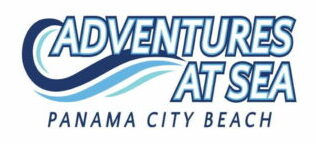How Panama Beach Is Ensuring It Will Stay Beautiful For Generations
If you don’t live right on the coast, you may not have realized that coastal erosion is an ongoing concern for many beachfront areas. With storms, tides, and waves, all working to reshape our land on a daily basis, over time, beaches can be completely eroded, with new beaches forming in other areas. In fact, the creation of our own Shell Island has much to do with these natural patterns.
In areas like PCB, we have the ability to nourish our gorgeous beaches, adding sand from other areas to replenish what’s washing away over time. We widen the beaches to make room for visitors and residents alike, but also to maintain natural habitats for sea turtles and other wildlife that make our beaches their homes.
The Panama City Beaches have been nourished three times since 1995, when Hurricane Opal caused significant damage and erosion on the beaches in 1998/1999, 2005/2006, and 2011. The first project added almost 10 million cubic yards of sand to the beaches, the second around 3.3 million cubic yards, and the third 1.4 million cubic yards. This summer, the Tourist Development Council in Panama City Beach approved a plan to add 840,000 cubic yards of sand to several beaches. They will specifically focus on Treasure Island, the County Pier, the City Pier, and Pinnacle Port.
The sand that’s added can’t just come from anywhere; it is dredged from approved “borrow” areas, where coastal engineering experts examine the sand that’s being harvested to make sure it’s the right size, color, and composition to blend in naturally with the sand already present on the beaches. Depending on how close the harvest area is to shore, equipment called a hopper dredge or a cutterhead pipeline dredge is used to harvest the sand. It is then transferred to the dry beach through a submerged pipeline in a water and sand slurry. Bulldozers can then manipulate the sand to make sure it matches the project template.
Both surveyors and coastal engineers monitor the beaches each year to monitor both yardage and volume lost on the beaches. As you can see by the slowly decreasing amounts of sand needed for nourishment, Panama City Beach is getting better at staying ahead of the curve and making sure that the beaches are staying healthy. Of course, any large storms can always change plans, and mean that beaches need to be nourished sooner instead of later.
This year, consultants like Lisa Armbruster said that high surf conditions and consistent southerly winds had caused several isolated areas of the Panama City Beach coastline to take a beating. Major indentations have cropped up behind Treasure Island; Carillion Beach and Pinnacle Port are among the beaches that were involved in both the 2006 and 2011 projects, and are considered areas which traditionally experience a higher level of erosion.
If you’re traveling to Panama City Beach this summer, it’s very unlikely that your vacation will be affected by the nourishment project. Engineers expect to do their work over the winter. If you’re planning a winter vacation, talk to us about your needs. We want to make sure that you see the very best the beach has to offer, and we’ll keep you up to date on any ways that the project could affect our services.
We’re glad that the TDC is taking action now to maintain the beaches for our visitors, our residents, and the wildlife that lives and loves on Panama City Beach!
